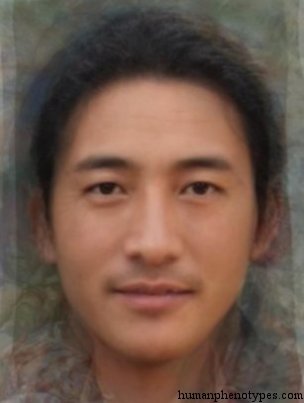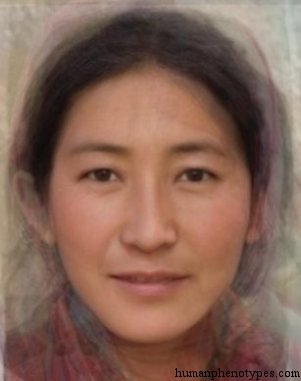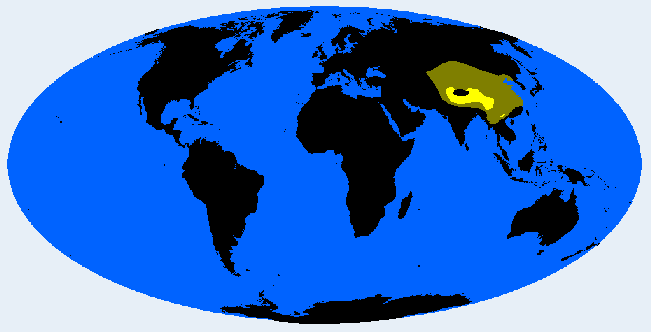Description:
Contact type of Indid and Sinid. Possibly also Paleo Sibirid groups that have adapted to the high altitude of the Tibetan Plateau, sometimes features appear Indianiform. Most typical in Ladhak of Northern India and West Tibetans. Also in Eastern and Northern Tibetans, especially in nomads, as well as in Szechuan and Northern Yunnan (especially in Yi, sometimes Miao). In lower frequencies across China, Nepal, Burma, and Central Asia.Physical Traits:
Light olive-brown skin with straight, sometimes wavy hair. Medium height, macro- mesoskelic, ectomorph to endomorph. Mesocephalic, mildly hypsicranic. Relatively prominent, long, mildly leptorrhine and slightly convex nose. Face is relatively broad, but narrower than in Sinids and Kham Tibetids. Eyelids narrow, epicanthic folds occur in some individuals, cheekbones pronounced, forehead narrow.Literature:
Defined by Turner (1913). Cole (1965) called it Tibetan/Himalayan race, Biasutti (1967) Tibetana, Alexeev (1979) Tibetan, Lundman (1961, 1967) Tibetid - Indid-Sinid contact type. Sometimes placed in Paleo (South) Mongolid or Sinid (Eickstedt, 1934, 1952). Eickstedt's (1944) Sino-Europids (Yi) may be integrated.






